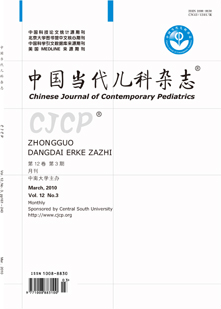● CLINICAL RESEARCH
ZUO Ying-Xi, ZHANG Le-Ping, LU Ai-Dong, WANG Bin, LIU Gui-Lan
2010, 12(3): 172-176.
OBJECTIVE: To investigate whether there were differences in the clinical characteristics, cytogenetic characteristics, immunophenotype and prognosis in children with B cell type acute lymphoblastic leukemia (B-ALL) carrying different fusion genes. METHODS: The research included 80 children with B-ALL from Peking University People’s Hospital between March 2006 and December 2008. Eighteen children were positive for TEL/AML1, 14 for E2A/PBX1, 11 for BCR/ABL,and 2 cases for MLL/AF4, and 35 cases were negative for all of the 4 fusion genes. Data including clinical characteristics, morphology, immunophenotype and cytogenetic characteristics were collected, and the disease-free survival (DFS) was evaluated. The children were followed up until April 2009. RESULTS: In the 18 children with TEL/AML1+B-ALL, 66.7% were younger than 5 years old. They had low tumor load. FAB-L2 morphology was commonly observed, but t(12;21) was often absence in these children. Up to now,17 children who survived were disease-free. In the 14 children with E2A/PBX1+B-ALL, the majority were female. Thirteen children showed FAB-L1 morphology. Twelve children showed pre-B-ALL immunophenotype. The EFS was close to 80%. In the 11 children with BCR/ABL+B-ALL, 10 children showed common B type immunophenotype. FAB-L1 and FAB-L2 morphology was found in 4 children respectively. The DFS was less than 20%. Two children with MLL/AF4 positive B-ALL had high tumor load. Their morphologic diagnosis was FAB-L1. Both showed the Pro-B-ALL immunophenotype. One child discontinued treatment at the early stage of chemotherapy, and the other child survived disease-free until now. CONCLUSIONS: The B-ALL children with different fusion genes have different clinical characteristics, immunophenotypes and prognosis.[Chin J Contemp Pediatr, 2010, 12 (3):172-176]
